Envision Math Grade 8 Volume 1 Chapter 7 Understand The Converse Of The Pythagorean Theorem
Page 381 Focus On Math Practices Answer
We have already proved that the sum of the areas of two squares with sides a and b is the same with the area of a square with side c
We have proved this relationship with all right-angle triangles.
Instead of the actual length of the sides, we have used the symbols a, b, and c
while proving the relationship for Kelly’s triangle.
Hence, this relationship is true for any right-angle triangle. The only mandatory condition is a triangle to be a right angle triangle.
Yes, another right-angle triangle drawn by Kelly will also have the same relationship.
This relationship is true for any right-angle triangle.

Envision Math Grade 8 Chapter 7 Solutions
Page 382 Essential Question Answer
Let the right-angle triangle be ABC
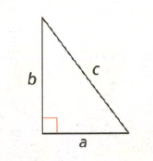
The base of the triangle is a
The height of the triangle is b and hypotenuse side is c
According to the Pythagorean theorem, the sum of the square of the base and height is equal to the square of the hypotenuse side.
So, according to the Pythagorean theorem
a2+ b2 = c2
According to the Pythagorean theorem, the sum of the square of two sides of a right-angle triangle is equal to the square of the hypotenuse side.
Hence, the relationship between the side lengths of the right angle triangle is given as a2+ b2 = c2
Page 382 Try It Answer
Given: Sides of a right-angle triangle is 15cm, 25cm and 20cm
To find : The equation that describes the relationship between the sides of the right-angle triangle.
We will use the Pythagorean theorem to find the relationship between the length of the sides of the triangle.
Let, the base (a) of the right angle triangle be 15cm
Let the height(b) of the right angle triangle be 20cm
Let the hypotenuse side (c) by 25cm
According to the Pythagorean theorem, a2+ b2 = c2
Substituting the value, we get,
152 + 202 = 252
We will solve the equation 152 + 202 = 252, to prove whether the relationship is true.
225 + 400 = 625
Combining common terms, we get,
625 = 625
Hence, the relationship is true.
So, according to the Pythagorean theorem, 152 + 202 = 252
The equation that describes the relationship between the length of the sides of right triangle is 152 + 202 = 252
Envision Math Grade 8 Converse Of The Pythagorean Theorem Answers
Page 382 Convince Me Answer
The diagram is
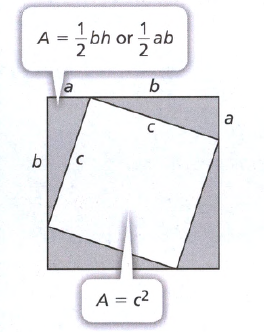
In the above diagram, instead of the actual lengths of the side, symbols like a, b, and c is used.
Since the length of the sides is not given in actual numbers hence, this formula can be applied to any right-angle triangle.
The only mandatory condition is that triangle has to be the right triangle.
Hence, the Pythagorean theorem can be applied to the all right triangle.
The side opposite to the greatest angle is the longest side of the right-angle triangle.
The Pythagorean theorem is applied to all right triangles because the lengths of the sides are given in symbol rather than the actual lengths.
Page 383 Try It Answer
Given:
The hypotenuse = 32 meters.
One leg = 18 meters.
To find : The length of the other leg.
We will use the Pythagorean theorem to find the length of the other leg.
Since we are not given the length of which side is 18meters
We will consider a = 18meters and solve for b
The hypotenuse of the triangle is c = 32 meters

So, the length of the other leg is 10√7
The length of the another leg is 10√7
Envision Math Grade 8 Volume 1 Student Edition Solutions Chapter 7
Envision Math Grade 8 Volume 1 Student Edition Solutions Chapter 7 Understand The Converse Of The Pythagorean Theorem Exercise 7.1 Page 384 Exercise 1 Answer
Let the right-angle triangle be ABC
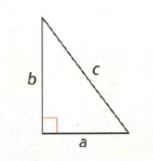
The base of the triangle is a
The height of the triangle is b and the hypotenuse side of the triangle is c
According to the Pythagorean theorem, the sum of the square of the base and height is equal to the square of the hypotenuse side.
So, according to the Pythagorean theorem a2+ b2 = c2
According to the Pythagorean theorem, the sum of the square of two sides of a right-angle triangle is equal to the square of the hypotenuse side.
Hence, the relationship between the side lengths of the right angle triangle is given as a2+ b2 = c2
Page 384 Exercise 2 Answer
The given diagram is
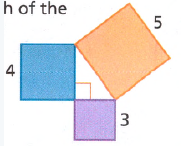
The diagram shows that the lengths of the legs are 4unit and 3 unit
While the length of the hypotenuse side is 5unit
we can see that the length of the hypotenuse is longer than other sides.
For any right triangle, the longest side is the hypotenuse side and the Pythagorean theorem is applied to only the right triangle.
Hence, the requested condition is that the square that would form the side of the hypotenuse would have the longest side.
Another condition is that each side of the triangle must be smaller than the sum of the other two sides.
If the side of the triangle are a, b, and c
Then a < b + c, b < a + c and c < a + b
No, any three squares cannot form the right triangle. The square forming the hypotenuse side would have the longest side and another condition is that each side of the triangle should be smaller than the sum of the other sides.
Page 384 Exercise 3 Answer
Given:
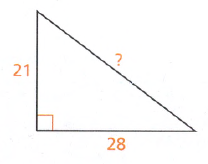
To find : Whether Xavier has given the correct length of the hypotenuse side.
In a right-angled triangle, 90-degree angle is the largest angle. The side opposite to the largest angle in a triangle is the longest side.
The triangle is

The length of the two legs are 21 units and 28 units
According to Xavier, the length of the hypotenuse is 18.5 units
But since the length of the other sides are 21 units and 28 units which is longer than Xavier’s hypotenuse side.
But since the length of the hypotenuse cannot be shorter than the other two sides, hence, the length given by Xavier is incorrect.
The length of the hypotenuse side should be longer than the other two sides. But the length of the hypotenuse side given by Xavier is less than the other two sides, hence, the length given by the hypotenuse side is an incorrect length.
Page 384 Exercise 4 Answer
Given: sides of a triangle is 4 and 5
To find: hypotenuse of triangle
We will put the given values in
Hypotenuse = \(\sqrt{\text { base }^2+\text { perpendicular }{ }^2}\)
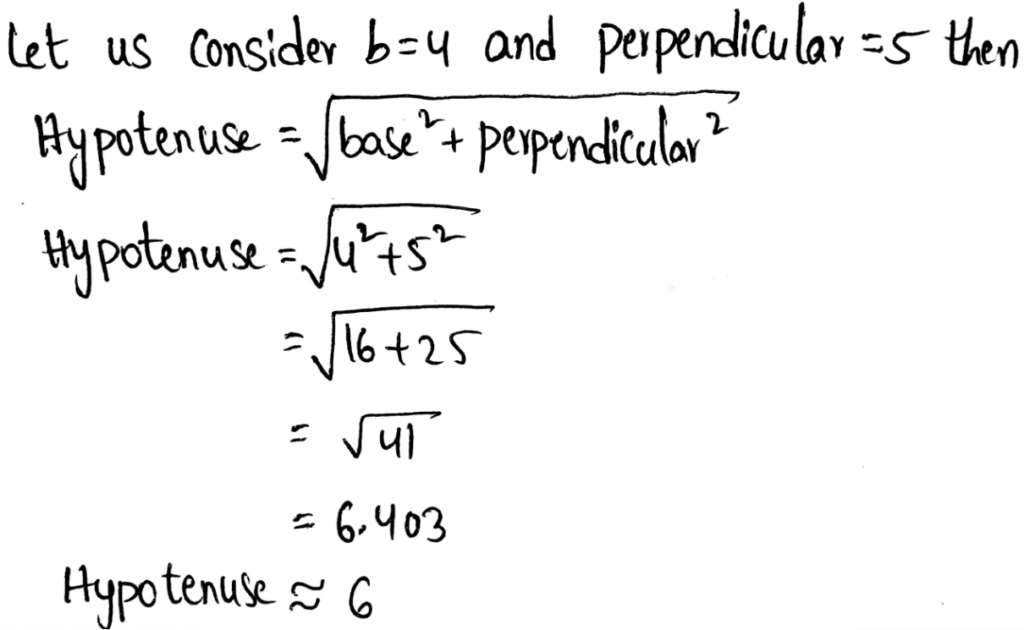
Hypotenuse of the triangle is ≈6
Page 384 Exercise 5 Answer
Given: perpendicular = 8 and hypotenuse = 14
To find: base of the triangle
We will use the Pythagoras formula and find the dimension of side.
Putting all the given values in Pythagoras formula
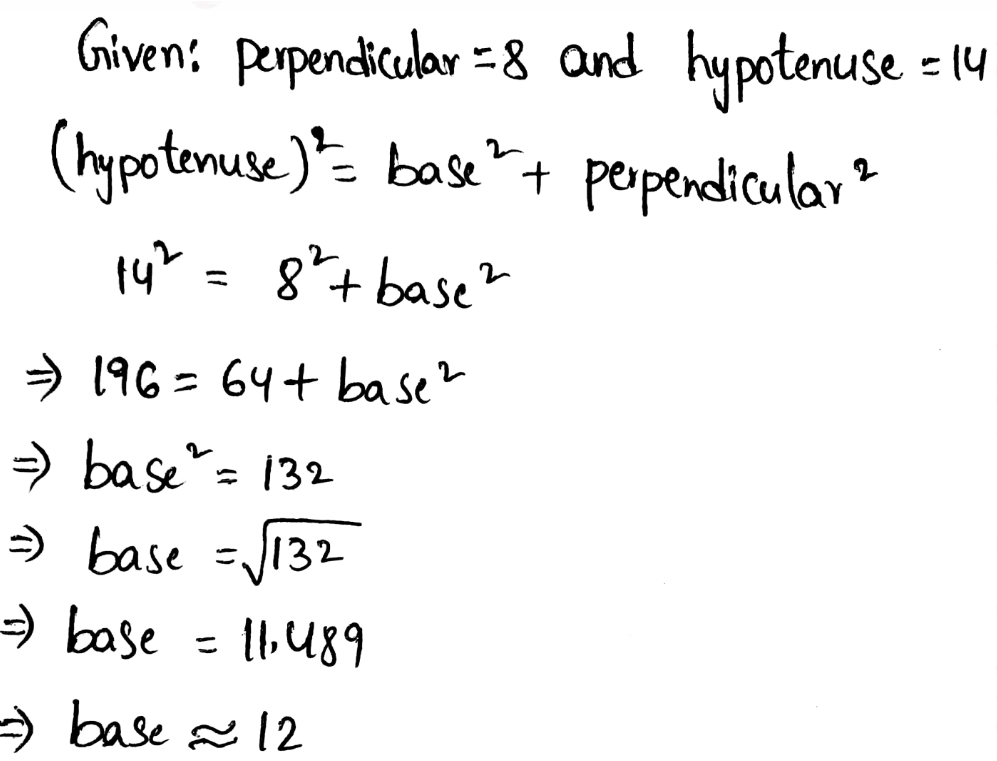
Base of the triangle is approximately 12 ft
Envision Math Grade 8 Volume 1 Student Edition Solutions Chapter 7 Understand The Converse Of The Pythagorean Theorem Exercise 7.1 Page 384 Exercise 6 Answer
Given: perpendicular = 3.7mm and base = 7.5 mm
To find: hypotenuse of the triangle
We will use the Pythagoras formula and find the dimension of side.
Putting all the given values in Pythagoras formula
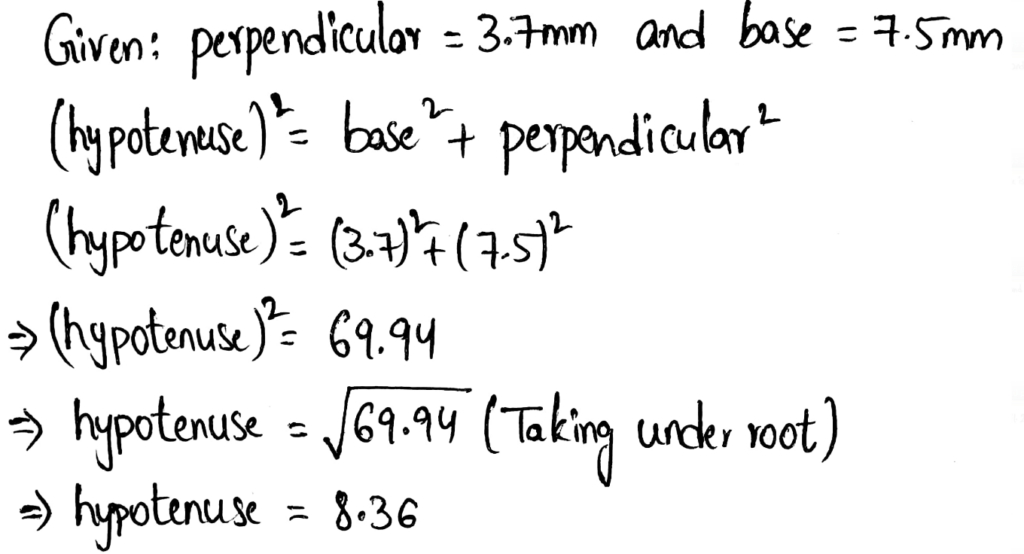
Hypotenuse of the given triangle is approximately 8
Page 385 Exercise 9 Answer
Given: perpendicular = 4x + 4 and base = 3x where x = 15
To find: hypotenuse of the triangle
We will use the Pythagoras formula and find the dimension of side.
Putting all the given values in Pythagoras formula and solving as
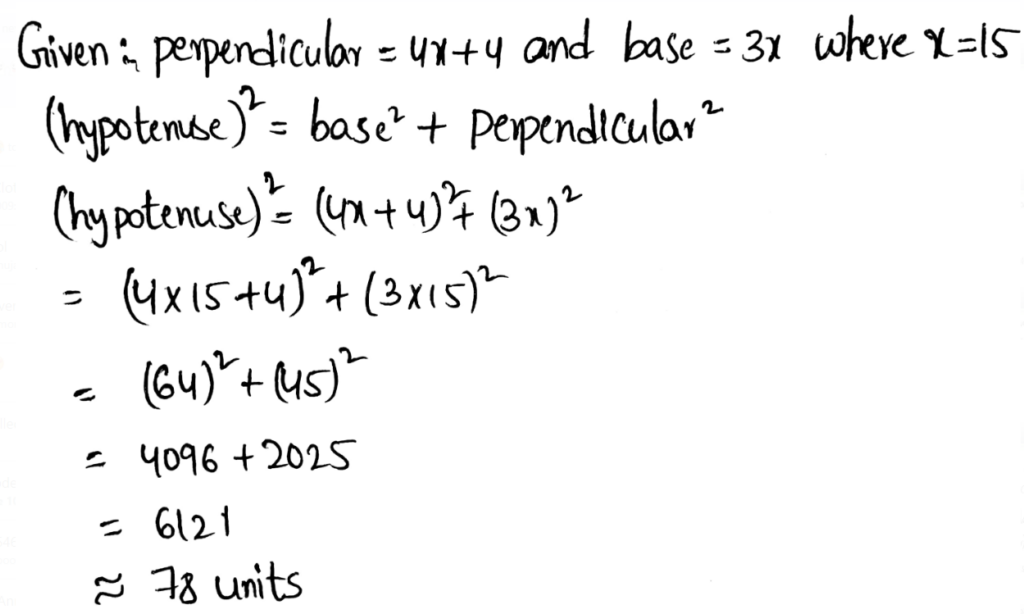
Hypotenuse of the given triangle is approximately 78 units.
Page 385 Exercise 10 Answer
Given: perpendicular=12.9cm and hypotenuse = 15.3 cm
To find: base of the triangle
We will use the Pythagoras formula and find the dimension of side.
Putting all the given values in Pythagoras formula and solving as
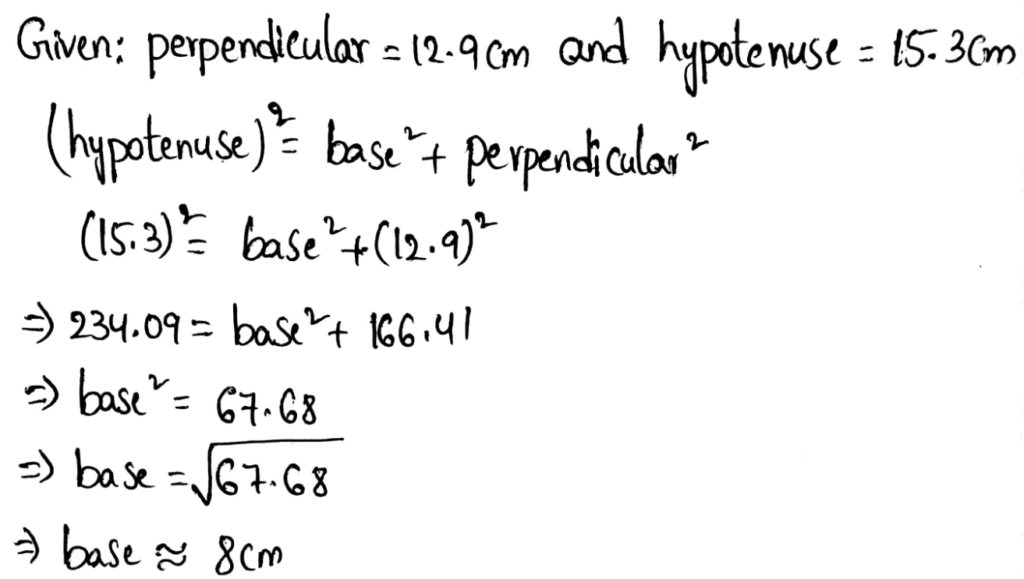
Base of the given triangle is approximately a = ≈ 8 cm
Envision Math Exercise 7.1 Answers Grade 8
Envision Math Grade 8 Volume 1 Student Edition Solutions Chapter 7 Understand The Converse Of The Pythagorean Theorem Exercise 7.1 Page 385 Exercise 11 Answer
Given: perpendicular=10m and base = 24m
To find: hypotenuse of the triangle
We will use the Pythagoras formula and find the dimension of side.
Putting all the given values in Pythagoras formula and solving as
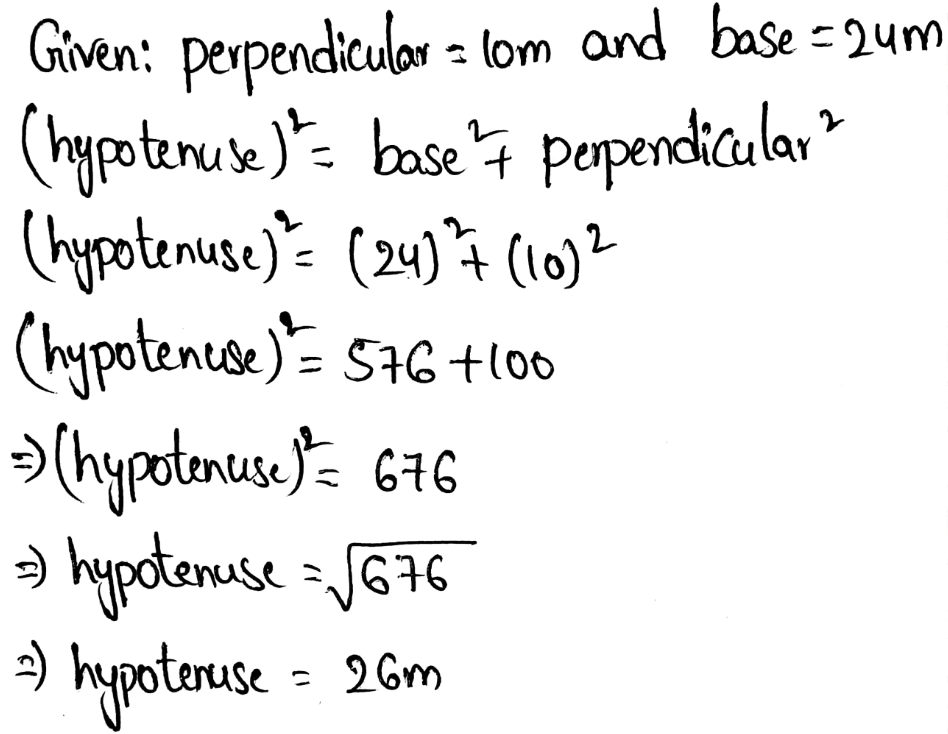
Hypotenuse of the given triangle is approximately 26 m
Page 385 Exercise 12 Answer
Given: base = 2ft and hypotenuse = 9 ft
To find: perpendicular of the triangle
We will use the Pythagoras formula and find the dimension of side.
Putting all the given values in Pythagoras formula and solving as
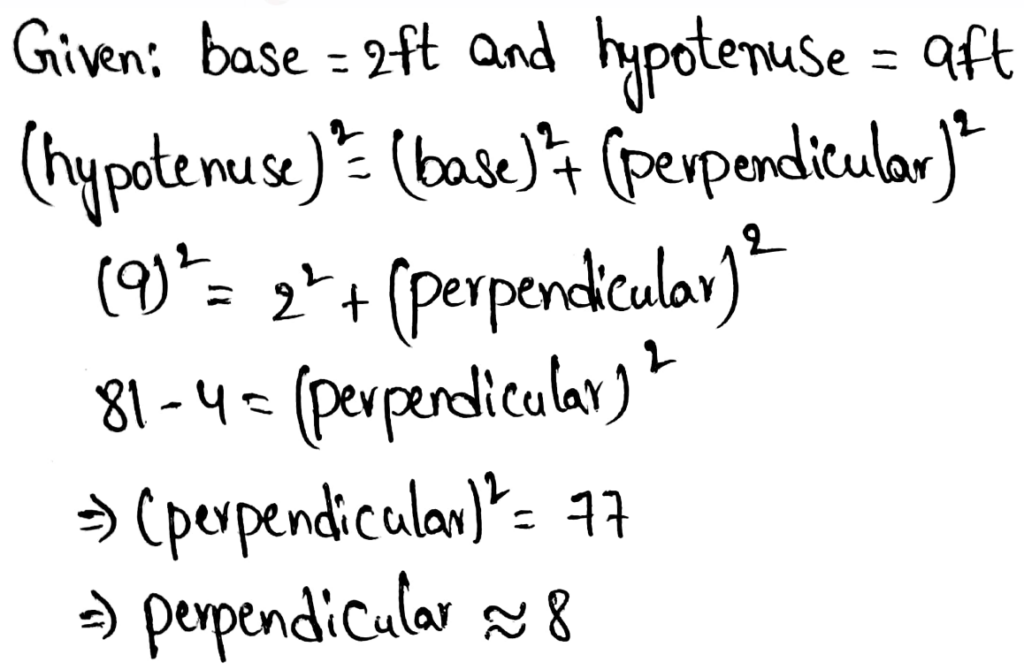
Perpendicular of the given triangle is approximately 8
Envision Math Grade 8 Pythagorean Theorem Chapter 7 Worksheet Solutions
Page 386 Exercise 13 Answer
Given: A triangle where two of the legs are 32 cm and 26 cm
To find: Hypotenuse of triangle
We will use the Pythagoras formula and find the dimension of the required side.
Putting all the given values in Pythagoras formula and solving as
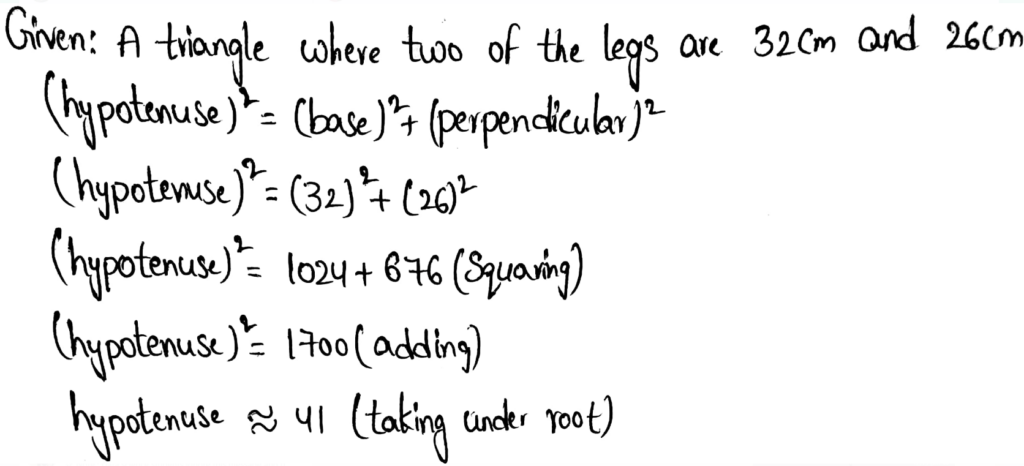
Length of hypotenuse of the given triangle is approximately 41 cm
Given: A triangle where two of the legs are 32 cm and 26 cm
To find: What mistake might the student have made?
We will write the dimension of hypotenuse calculated and match it with given one.
As per the calculation using
(hypotenuse)2 = base2 + perpendicular2
Hypotenuse is approximately 41 cm.
The mistake might be done in taking the values of legs incorrectly or in the formula.
Mistake might be in the formula taken or dimensions taken.
Page 386 Exercise 14 Answer
Given: A figure of triangle where base is 12.75 and hypotenuse is 37.25
To find: unknown side of the triangle
We will use the Pythagoras formula and find the dimension of the required side.
Putting all the given values in Pythagoras formula and solving as
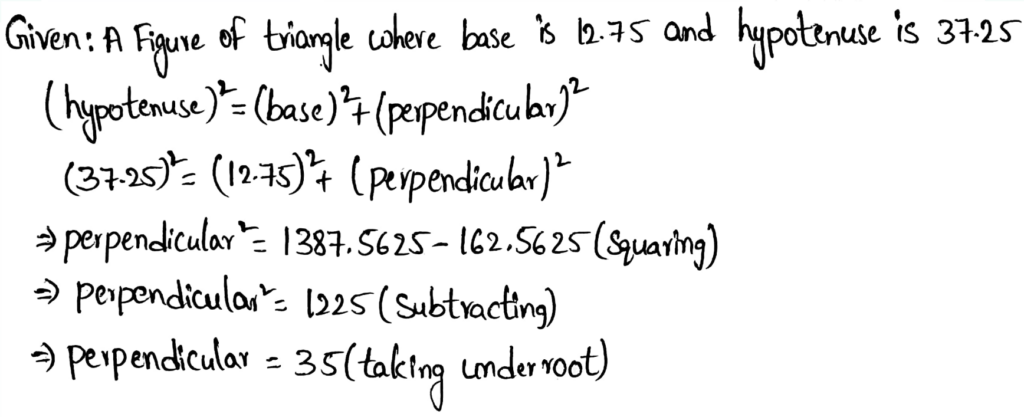
Length of perpendicular of the triangle is 35
Understand The Converse Of The Pythagorean Theorem Envision Math Grade 8 Solutions
Envision Math Grade 8 Volume 1 Student Edition Solutions Chapter 7 Understand The Converse Of The Pythagorean Theorem Exercise 7.1 Page 386 Exercise 16 Answer
Given: A figure of triangle where two sides are 36 and 15 ft
To find: unknown side of the triangle
We will use the Pythagoras formula and find the dimension of the required side.
Putting all the given values in Pythagoras formula and solving as
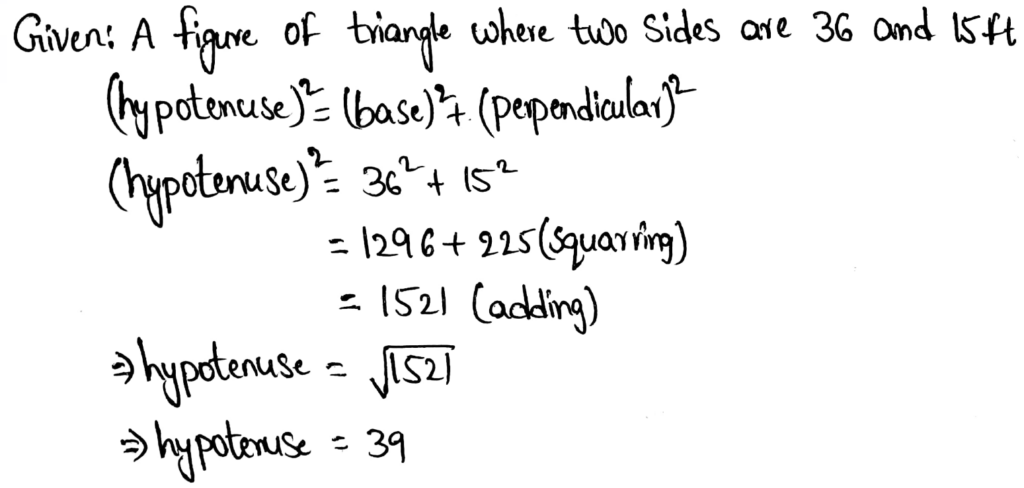
Length of hypotenuse of the given triangle is 39 ft.
Solutions For Envision Math Grade 8 Exercise 7.1
Page 386 Exercise 17 Answer
Given: A figure of triangle where base is 11.25 cm and hypotenuse is 35.25 cm
To find: unknown side of the triangle
We will use the Pythagoras formula and find the dimension of the required side.
Putting all the given values in Pythagoras formula and solving as
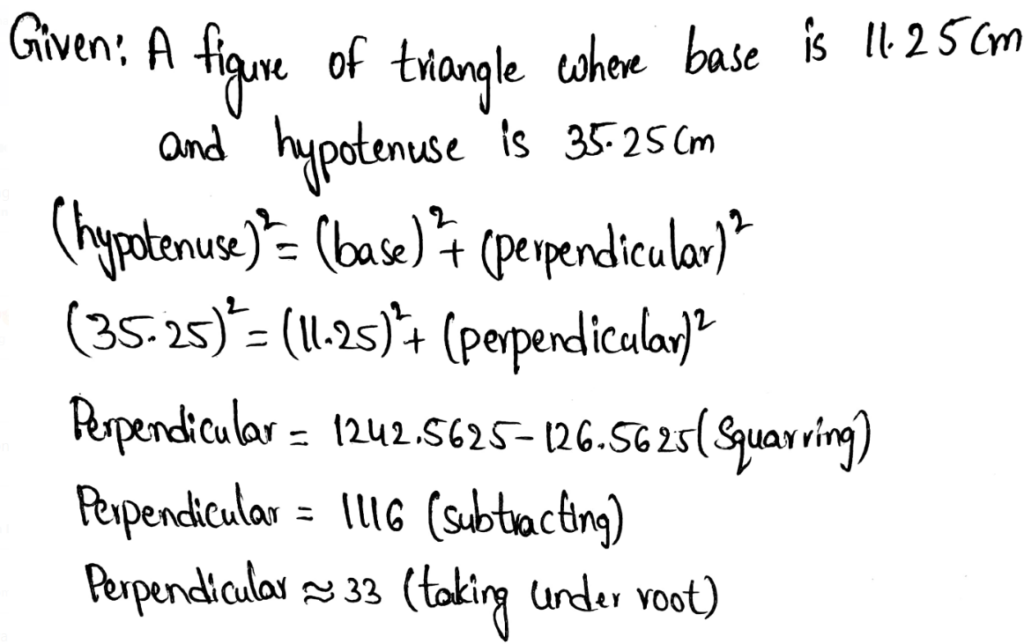
Length of perpendicular of the given triangle is approximately33 cm.
